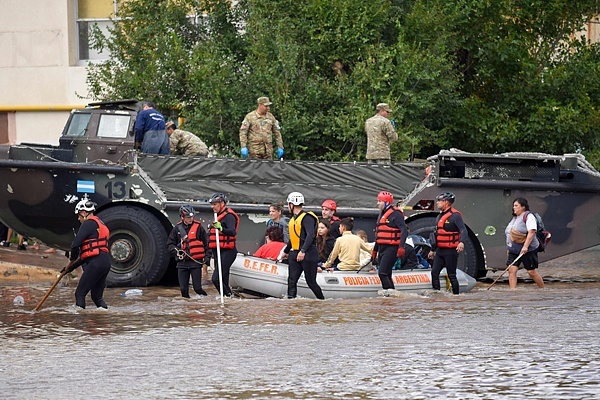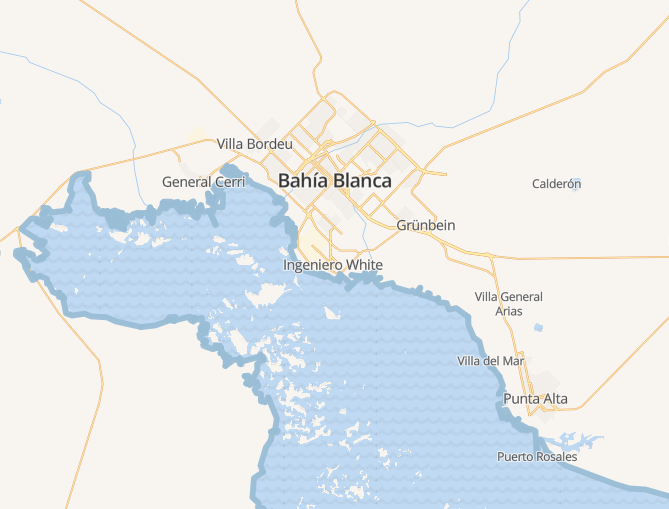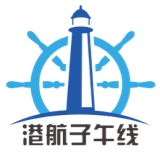Extreme Rainstorm Hits Bahía Blanca, Forcing 1,300 Evacuations and Causing 16 Fatalities! 极端暴雨袭击布兰卡港,1300人撤离,16人遇难!
Ⅰ Urban Paralysis and Emergency Rescue
On March 7,Bahía Blanca, an important port city in the province of Buenos Aires, Argentina, was hit by an extreme rainstorm, with a daily rainfall exceeding 400 millimeters—nearly the city's annual average precipitation. The resulting floods caused severe urban waterlogging, resulting in 16 deaths and the emergency evacuation of over 1,300 people. On March 8, the Argentine authorities announced the launch of a post-disaster reconstruction plan, urgently dispatching a medical train to support the disaster area. Economic Minister Luis Caputo also approved a financial aid package of 10 billion pesos (equivalent to approximately RMB 80 million).
一、暴雨成灾:城市瘫痪与紧急救援
阿根廷布宜诺斯艾利斯省重要港口城市布兰卡港7日遭遇极端暴雨侵袭,单日降雨量突破400毫米,接近该市年均降水量。洪灾引发城市严重内涝,已造成16人死亡,超1300人紧急撤离。阿根廷当局8日宣布启动灾后重建计划,并紧急调派医疗列车支援灾区,经济部长路易斯·卡普托同时批准100亿比索(约合人民币8000万元)的财政援助。

Image Credit:Internet
图源网络
Ⅱ Bahía Blanca: The Lifeline of South Atlantic Shipping
Geographical Location
Bahía Blanca, located at 38°47' South latitude and 62°17' West longitude, is approximately 510 nautical miles from the Port of Buenos Aires. Situated in the southern part of Buenos Aires Province and bordering the Atlantic Ocean, it is Argentina's largest wheat export port and one of the country's most important deep-sea ports. Its strategic location makes it a key node in the shipping network connecting the East Coast of South America with Africa, Europe, and Asia.
The port features multiple berths, with 12 berths for bulk and general cargo terminals, a quay length of 2,080 meters, and a maximum draft of 12.19 meters. The oil terminal has three berths, with a quay length of 880 meters and a maximum draft of 12.19 meters. The port's handling equipment includes various shore cranes, gantry cranes, loading pipes, floating cranes, conveyors, and tugs. The largest shore crane has a lifting capacity of 35 tons, while the floating crane can lift up to 50 tons.
二、布兰卡港:南大西洋的航运动脉
(1)地理位置
布兰卡港,港口坐标为南纬38°47',西经62°17',距首都布宜诺斯艾利斯港约510海里,位于阿根廷布宜诺斯艾利斯省南部,濒临大西洋,是阿根廷最大的小麦输出港,也是阿根廷最重要的深水港之一。其地理位置使其成为连接南美东海岸与非洲、欧洲及亚洲航运网络的关键节点。
港口拥有多个泊位,其中散、杂货码头有12个泊位,岸线长2080米,最大水深12.19米;油码头有3个泊位,岸线长880米,最大水深12.19米。装卸设备包括各种岸吊、门吊、装货管、浮吊、输送机及拖船等,其中岸吊最大起重能力为35吨,浮吊达50吨。

Image Credit:Internet
图源网络
Connectivity with Neighboring Countries
Brazil: As a member of the Southern Common Market (MERCOSUR), Argentina relies on Bahía Blanca for exporting grains (soybeans, wheat) and petrochemical products to Brazil, while importing industrial machinery from Brazil.
Uruguay: Through the La Plata River basin's intermodal network, Bahía Blanca competes with and collaborates with Uruguay's Montevideo Port in regional bulk cargo transportation.
Chile: Although not sharing a border, Bahía Blanca forms a complementary logistics network with Chile's central agricultural and mining regions via overland routes (such as RN35 highway).
(2)与周边国家的关联性
巴西:作为南方共同市场(MERCOSUR)成员,阿根廷与巴西的贸易依赖布兰卡港出口谷物(大豆、小麦)和石油化工产品,同时进口巴西工业机械。
乌拉圭:通过拉普拉塔河流域的联运网络,布兰卡港与乌拉圭的蒙得维的亚港在区域散货运输中存在竞争与合作关系。
智利:虽无直接接壤,但通过陆路运输(如RN35公路)与智利中部的农业和矿业区域形成补充性物流网络。
Port Characteristics
Bulk Cargo: Dominated by grain exports (wheat, corn), petrochemical products (polyethylene, urea), and fertilizers, which account for over 70% of the port's throughput.
General Cargo: Includes machinery, steel, etc., which are distributed through the port's gantry cranes and warehousing facilities.
Maritime Services:
Ship Repair and Fueling: The port offers medium-sized dry docks and fuel supply facilities for regional fishing boats and cargo ships.
Navigation Support: It provides tugboat, pilotage services, and meteorological monitoring to adapt to complex tidal conditions.
Logistics Integration: The port collaborates with railway companies to achieve multimodal transportation ("port-railway-highway"), reducing inland transportation costs.
(3)港口特性
散货:主导谷物(小麦、玉米)、石油化工产品(聚乙烯、尿素)和化肥出口,占港口吞吐量的70%以上。
杂货:包括机械设备、钢材等,依托港口的龙门吊和仓储设施进行分拨。
海运服务:
船舶维修与燃料补给:拥有中型干船坞和燃油供应设施,服务区域渔船和货轮。
导航支持:提供拖船、引航服务和气象监测,适应复杂潮汐条件。
物流整合:与铁路公司合作,实现“港口-铁路-公路”多式联运,降低内陆运输成本。
Natural Constraints on Port Operations
Draft and Tidal Range:
Maximum Draft: The main channel's depth of 14 meters can accommodate Panamax bulk carriers (80,000-ton class) but cannot receive Very Large Ore Carriers (VLOCs, requiring over 18 meters of draft).
Tidal Range: With an average tidal range of only 1.5 meters, Bahía Blanca is a micro-tidal port. While this ensures high loading and unloading efficiency, it also leads to significant siltation problems (annual dredging costs account for 15% of the port's maintenance budget).
Rainy Season Impact:
Concentrated Rainfall: The port's annual average precipitation is 600 millimeters, with 60% occurring during the rainy season (October to December). This increases the risk of grain moisture in open storage areas, necessitating waterproof warehousing (currently covering only 40% of the area).
Flood Risk: Seasonal flooding of the Salado River may interrupt the port's railway branches, causing an average of 3-5 days of shutdown per year.
Sustainability Challenges:
Natural conditions limit the expansion of deep-water berths, and high dredging costs force the port to prioritize high-value bulk cargo (such as petrochemicals) over large-scale, low-profit grain exports.
(4)自然条件对港口的约束
吃水与潮差:
最大吃水:主航道水深14米,可容纳巴拿马型散货船(8万吨级),但无法停靠超大型矿砂船(VLOC,需18米以上水深)。
潮差:平均潮差仅5米,属弱潮港,装卸效率较高,但泥沙回淤问题显著(年疏浚成本占港口维护预算的15%)。
雨季影响:
降雨集中:年均降水600毫米,雨季(10-12月)占60%,导致港口露天堆场谷物受潮风险增加,需依赖防水仓储(覆盖率仅40%)。
洪水风险:萨拉多河季节性泛滥可能阻断港口铁路支线,年均停工3-5天。
可持续性挑战:
自然条件限制了深水泊位扩建,且疏浚成本高昂,迫使港口优先发展高附加值散货(如石油化工),而非大规模低利润谷物出口。
Port Management Efficiency and Potential Issues
Management Efficiency:
Complex Administrative Hierarchy: The port is managed by the Bahía Blanca Port Authority, which must coordinate with the federal government, provincial authorities, and private enterprises. This results in long decision-making cycles (e.g., dredging project approvals take up to 18 months).
Technological Lag: The port's low level of automation relies heavily on manual operations, resulting in a cargo damage rate 0.5%-1% higher than international standards.
Corruption and Kickbacks:
Union Control: The stevedoring union is accused of monopolizing labor supply and charging "additional service fees" (3%-5% of freight costs).
Rent-Seeking at Public Terminals: According to a 2021 investigation by the Argentine newspaper La Nación, some customs officials collude with logistics companies to charge gray fees under the guise of "expediting customs clearance," increasing trade costs.
(5)港口管理效率与潜在问题
管理效率:
行政层级复杂:港口由布兰卡港务局管理,需协调联邦政府、省政府和私营企业,决策周期长(如疏浚项目审批需18个月)。
技术滞后:码头自动化程度低,依赖人工操作,货损率较国际标准高0.5%-1%。
腐败与抽成问题:
工会控制:装卸工会被指控垄断劳动力供应,强制收取“额外服务费”(占运费3%-5%)。
公共码头寻租:据阿根廷媒体《号角报》调查(2021年),部分海关官员与物流公司合谋,以“加快清关”为由收取灰色费用,推高贸易成本。
Social and Regional Relationships
Immigration and Community Ties:
Uruguayan and Italian Immigrants: The late 19th-century immigration wave created a multicultural community, with Uruguayan descendants accounting for 8% of the population. This has fostered cultural cooperation between Bahía Blanca and Montevideo (e.g., joint festivals).
Brazilian Multinational Corporations: Brazilian Petrochemical Company's investment in Bahía Blanca's petrochemical zone has led to cross-border labor mobility.
Regional Conflicts and Cooperation:
Fishing Disputes: There are fishing rights disputes with Uruguay in the La Plata River estuary, but these are mitigated through MERCOSUR frameworks.
Energy Interconnection: Discussions with Chile on cross-border natural gas pipelines leverage Bahía Blanca's LNG facilities to supply energy to South America's west coast.
Bahía Blanca, with its deep-water conditions and agricultural hinterland advantages, plays a crucial role in South Cone bulk cargo trade. However, natural limitations and inefficient management restrict its expansion potential. Its deep economic integration with Brazil and Uruguay and transnational social networks provide regional resilience, while corruption issues require systemic reform to enhance competitiveness.
(6)与周边国家的深刻社会关系
移民与社区纽带:
乌拉圭与意大利移民:19世纪末移民潮形成多文化社区,乌拉圭裔占人口8%,推动港口与蒙得维的亚港的文化合作(如联合节庆)。
巴西跨国企业:巴西石油公司参与布兰卡港石化园区投资,带动技术工人跨境流动。
区域冲突与合作:
渔业争端:与乌拉圭在拉普拉塔河口的捕捞权争议,但通过MERCOSUR框架协商缓解。
能源互联:与智利讨论跨境天然气管道项目,利用布兰卡港的液化天然气(LNG)设施向南美西海岸供能。
布兰卡港凭借其深水条件和农业腹地优势,在南锥体散货贸易中占据关键地位,但自然限制与管理低效制约其扩张潜力。与巴西、乌拉圭的深度经济整合及跨国社会网络,为其提供了区域协作的韧性,而腐败问题仍需系统性改革以提升竞争力。
Ⅲ Upstream and Downstream Ports Face Chain Reactions
As a key deep-sea port in southern Argentina, Bahía Blanca's shipping network is linked with neighboring ports, collectively supporting South Atlantic trade. These upstream and downstream ports serve as alternative hubs for cargo diversion, specifically:
Upstream (Northern) Ports
Port of Buenos Aires (Bahía de Buenos Aires)
Status: Argentina's largest comprehensive port, handling approximately 60% of the country's container freight.
Function: Primarily focused on the import and export of industrial goods and consumer products, with some agricultural transportation.
Challenges: Due to outdated facilities and a shallow channel (only 10 meters deep), large vessels rely on outer ports (such as La Plata Port), and its throughput capacity is nearing saturation.
La Plata Port (Bahía La Plata)
Positioning: An auxiliary port to Buenos Aires Port, specializing in bulk and energy cargo transportation (e.g., oil, natural gas).
Advantage: With a depth of 12 meters, it can accommodate larger vessels and relieve the pressure on the capital's port.
三、区域航运链承压:上下游港口面临连锁反应
布兰卡港作为阿根廷南部重要的深水港,其航运网络与周边港口形成联动,共同支撑南大西洋贸易。上下游港口作为邻近枢纽,承担货物分流的替代港,具体包括:
上游(北部)港口
布宜诺斯艾利斯港(Bahía de Buenos Aires)
地位:阿根廷最大综合性港口,全国约60%的集装箱货运量经此中转。
功能:以工业品、消费品进出口为主,兼顾部分农产品运输。
挑战:因设施老旧、航道深度限制(仅10米),大型船舶需依赖外港(如拉普拉塔港),吞吐能力接近饱和。
拉普拉塔港(Bahía La Plata)
定位:布宜诺斯艾利斯港的辅助港,专营散货和能源运输(如石油、天然气)。
优势:水深达12米,可停靠更大吨位船舶,分担首都港压力。
Downstream (Southern) Ports
Río Gallegos Port (Bahía de Río Gallegos)
Location: Argentina's southernmost port, near the Strait of Magellan, serving as a vital supply point for Antarctica.
Function: Mainly exports fishery and oil and gas resources, with a relatively small freight scale, making it unsuitable for large-scale agricultural cargo diversion.
Madryn Port (Bahía Madryn)
Characteristics: The core port of the Patagonian region, primarily exporting bauxite and chemical products, with a growing cruise tourism business in recent years.
Limitations: Its infrastructure is heavily industrial-oriented, with limited capacity for agricultural product handling.
下游(南部)港口
里奥加列戈斯港(Bahía de Río Gallegos)
区位:阿根廷最南端,靠近麦哲伦海峡,是通往南极的重要补给点。
功能:以渔业、油气资源出口为主,货运规模较小,难以承接大宗农产品分流。
马德林港(Bahía Madryn)
特色:巴塔哥尼亚地区核心港口,主营铝土矿、化工产品出口,近年拓展旅游邮轮业务。
局限:基础设施偏重工业,农产品处理能力有限。
Regional Collaborative Port Clusters
Montevideo (Montevideo)
Strategic Position: A natural deep-water port in the South Atlantic with a depth of 14 meters, it serves as the container transshipment hub of the Southern Cone region.
Alternative Role: Often acts as an alternative port when Bahía Blanca is blocked, attracting temporary berthing from international shipping companies.
Santos (Santos)
Global Influence: The largest port in South America, handling 80% of Brazil's coffee and soybean exports, it collaborates with Bahía Blanca to serve trans-Atlantic and Asian routes.
The recent flood has led to a complete suspension of operations at Bahía Blanca, expected to cause short-term disruptions in the regional logistics chain. As a key southern hub in Argentina, the port's interruption may force cargo diversion to upstream Buenos Aires Port or downstream Río Gallegos Port. However, these two ports are already facing saturated throughput capacities, and the diversion pressure may further increase vessel demurrage and freight costs.
Moreover, Bahía Blanca is closely connected to the inland agricultural production areas via rail and road. The interruption of land transportation due to the flood may further delay the distribution of agricultural products, affecting international buyers' supply chains. Analysts point out that Argentina, as the world's third-largest soybean exporter, may face impacts on the global agricultural trade market if port functions are not restored promptly.
区域协作港口群
乌拉圭蒙得维的亚港(Montevideo)
战略地位:南大西洋天然深水港,水深达14米,是南锥体地区集装箱转运中心。
替代作用:常作为布兰卡港受阻时的备选港,尤其吸引国际航运公司临时靠泊。
巴西桑托斯港(Santos)
全球影响:南美最大港口,承担巴西80%的咖啡、大豆出口,与布兰卡港共同服务跨大西洋和亚洲航线。
此次洪灾导致布兰卡港作业全面暂停,预计将引发区域物流链的短期震荡。作为阿根廷南部核心枢纽,该港的中断可能迫使货物分流至上游的布宜诺斯艾利斯港或下游的里奥加列戈斯港。然而,这两大港口本就面临吞吐量饱和问题,分流压力或加剧船舶滞期与货运成本上升。
此外,布兰卡港与内陆农业产区通过铁路及公路紧密连接,洪灾造成的陆路交通中断恐进一步延迟农产品集散,影响国际买家供应链。分析人士指出,阿根廷作为全球第三大大豆出口国,若港口功能未能及时恢复,可能冲击全球农产品贸易市场。
Shipping Routes
Bahía Blanca, together with Brazil's Santos Port and Uruguay's Montevideo Port, forms the Southern Cone port cluster, radiating three major shipping routes: the South Atlantic to Cape of Good Hope route, the trans-Atlantic to Europe route, and the Pacific route via the Panama Canal to Asia. As the "gateway" for Argentina's agricultural exports, Bahía Blanca's shipping network covers three directions and is crucial to the global supply chain:
航线分布
布兰卡港与巴西桑托斯港、乌拉圭蒙得维的亚港形成南锥体港口群,共同辐射南大西洋至好望角航线、跨大西洋至欧洲航线,以及经巴拿马运河通往亚洲的太平洋航线。布兰卡港作为阿根廷农产品出口“门户”,其航线网络覆盖三大方向,对全球供应链至关重要:
Trans-Atlantic to Europe Route
Path: Bahía Blanca → South Atlantic → Strait of Gibraltar → Major European ports (e.g., Rotterdam, Hamburg).
Cargo: Primarily agricultural products such as soybeans, wheat, and beef, with European industrial equipment imported in return.
Competing Ports: Brazil's Santos Port and Uruguay's Montevideo Port share this route, competing for cargo sources.
跨大西洋至欧洲航线
路径:布兰卡港→经南大西洋→直布罗陀海峡→欧洲主要港(如鹿特丹、汉堡)。
货类:大豆、小麦、牛肉等农产品为主,欧洲工业设备反向输入。
竞争港:巴西桑托斯港、乌拉圭蒙得维的亚港共享此航线,形成货源竞争。
Via Panama Canal to Asia Route
Path: Bahía Blanca → Pacific Ocean → Panama Canal → China (Shanghai, Qingdao), Japan (Yokohama), South Korea (Busan).
Cargo: Dominated by soybeans and corn, with China being the main destination (accounting for over 70% of Argentina's soybean exports).
Bottlenecks: High canal transit fees and water level restrictions during the dry season may increase delay risks.
经巴拿马运河至亚洲航线
路径:布兰卡港→太平洋→巴拿马运河→中国(上海、青岛)、日本(横滨)、韩国(釜山)。
货类:大豆、玉米占主导,中国为主要目的地(占阿根廷大豆出口70%以上)。
瓶颈:运河通行费高昂,旱季水位限制或加剧延误风险。
Africa and Cape of Good Hope Route
Path: Bahía Blanca → Around the Cape of Good Hope → West Africa (Lagos, Nigeria), South Africa (Durban) → Middle East (Dubai).
Cargo: Combines agricultural exports with imports of Middle Eastern petrochemical products. The recent growth in African grain demand has increased the route's activity.
非洲及好望角航线
路径:布兰卡港→绕好望角→西非(尼日利亚拉各斯)、南非(德班)→中东(迪拜)。
货类:兼顾农产品出口与中东石油化工品进口,近年非洲粮食需求增长推动航线活跃度。
South American Regional Routes
Path: Connects with neighboring countries' ports such as Brazil (Santos, Rio de Janeiro), Chile (Valparaíso), Peru (Callao).
Cargo: Regional complementary trade of industrial parts, minerals, and agricultural products.
南美区域内航线
路径:连接巴西(桑托斯、里约热内卢)、智利(瓦尔帕莱索)、秘鲁(卡亚俄)等邻国港口。
货类:工业零部件、矿产与农产品的区域互补贸易。
Ⅳ Reconstruction and Reflection: Climate Resilience as a Future Focus
Port Accident Review
2023 December Storm Incident:
On December 16, 2023, Bahía Blanca was hit by a prolonged storm with maximum sustained winds of up to 150 kilometers per hour. The storm caused the roof of a skating rink to collapse, killing at least 13 people and injuring dozens. The local government quickly launched rescue operations and issued an orange disaster alert, advising residents to stay indoors.
Historical Extreme Weather Events:
Bahía Blanca experienced a major storm in 1930 with a rainfall of 175 millimeters, while the recent 2025 storm recorded nearly triple that amount.
These events indicate that Bahía Blanca has suffered from natural disasters, especially extreme weather, multiple times in the past. The Argentine government has prioritized port reconstruction, but experts emphasize that the port's location on a low-lying alluvial plain makes it vulnerable to storm surges and extreme rainfall. The disaster exposed the insufficient disaster resistance of the port's infrastructure. How to enhance the port's flood prevention design and optimize the emergency response system in the future will be crucial to ensuring regional economic stability.
In the future, how the Argentine government can enhance the port's disaster resistance in reconstruction and how the international community can collaborate to address the threat of climate change to the global logistics network will be key to ensuring economic stability and food security. The tragedy of Bahía Blanca reminds us that in the face of escalating climate crises, being prepared is no longer a choice but a necessity. This disaster may mark a turning point, pushing global ports from "passive response" to "active defense" and preparing for the next unknown storm.
E-PORTS, as a third-party global intelligent vessel service management platform, offers comprehensive maritime service solutions for vessels in global ports. For inquiries or consultations regarding Bahía Blanca, please contact E-PORTS:
WhatsApp/WeChat: +86 13816101982
Email: contact@e-ports.com
四、重建与反思:气候韧性成未来焦点
港口事故回顾
2023年12月强风暴事故:
2023年12月16日,布兰卡港遭遇持续强风暴袭击,最大持续风速达每小时150公里。风暴导致一处正在举行滑冰比赛的体育馆屋顶坍塌,造成至少13人死亡,数十人受伤。当地政府迅速启动救援,并发布灾害橙色警报,建议居民避免外出。
历史上的极端天气事件:
布兰卡港曾在1930年遭遇过一次重大风暴,当时降雨量为175毫米,而此次2025年的暴雨降雨量几乎是1930年的三倍。
这些事件表明,布兰卡港在过去曾多次遭受自然灾害的冲击,尤其是极端天气事件对其造成了严重的人员伤亡和财产损失。阿根廷政府已将港口重建列为优先事项,但专家强调,布兰卡港地处低洼冲积平原,长期面临风暴潮与极端降雨威胁,此次灾难暴露了基础设施抗灾能力的不足。未来如何提升港口防洪设计、优化应急响应体系,将成为确保区域经济稳定的关键课题。
未来,阿根廷政府如何在重建中提升港口的抗灾能力,国际社会如何协作应对气候变化对全球物流网络的威胁,将成为确保经济稳定与粮食安全的关键课题。布兰卡港的悲剧提醒我们:在气候危机日益加剧的今天,未雨绸缪已不再是选择,而是必须。这场灾难或许是一个转折点,推动全球港口从“被动应对”走向“主动防御”,为下一次未知的风暴做好准备。E-PORTS 作为第三方全球智能船舶服务管理平台,提供船舶在全球港口的综合海事服务解决方案,为船舶“保驾护航”,了解或咨询布兰卡港相关情况,欢迎联系E-PORTS:
WhatsApp/WeChat:13816101982
Email:contact@e - ports.com








